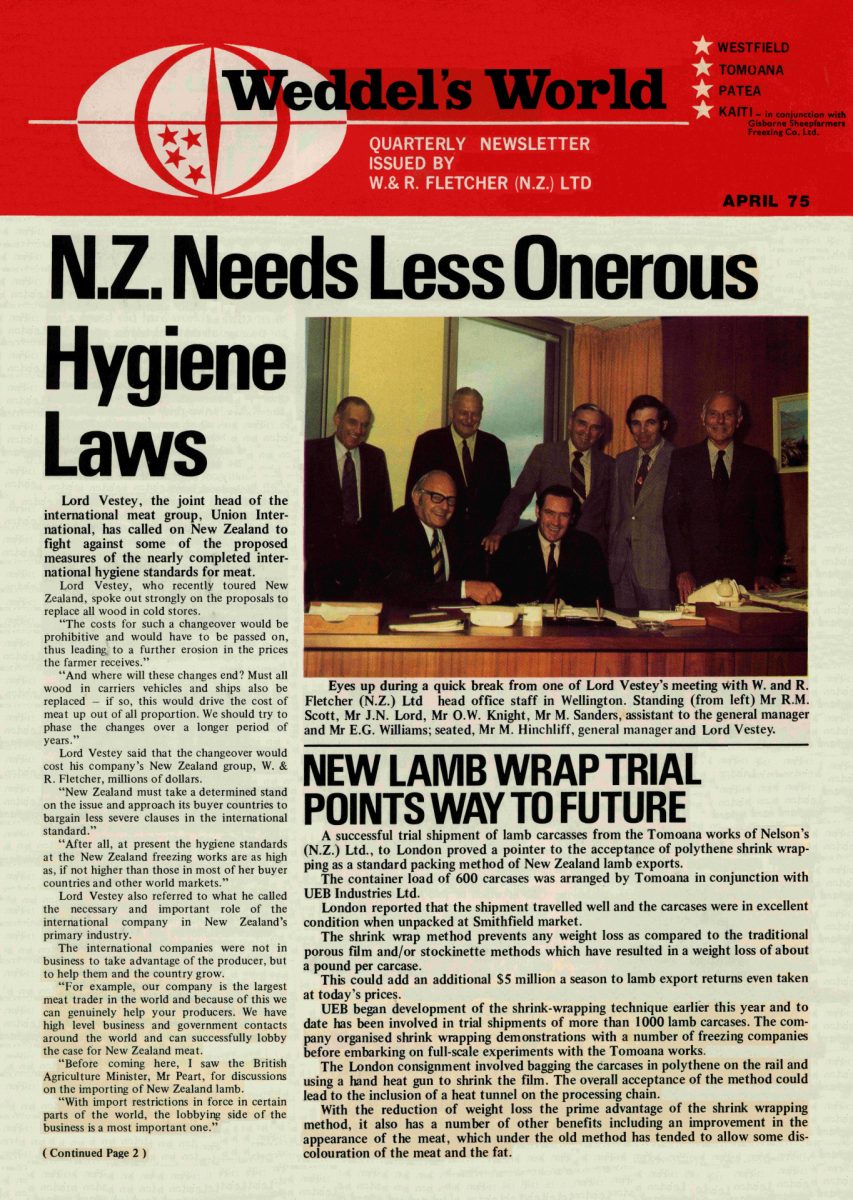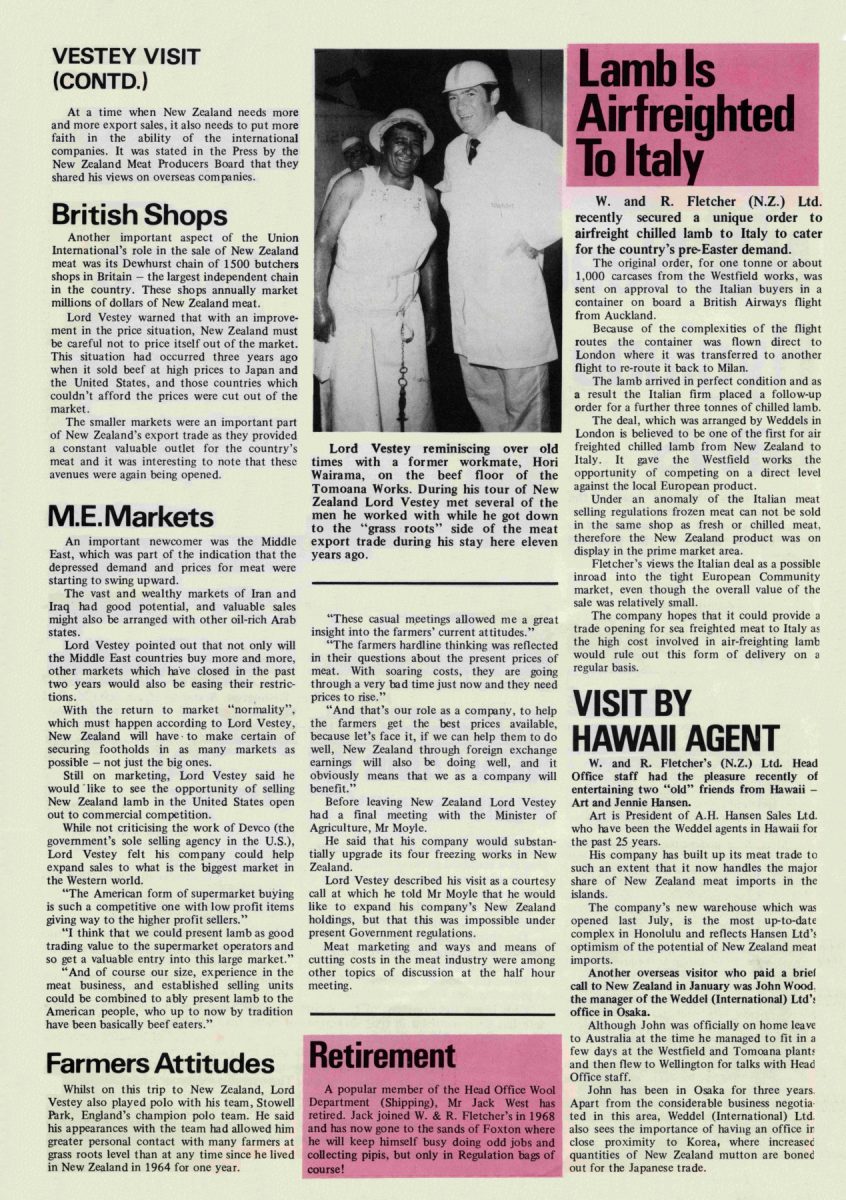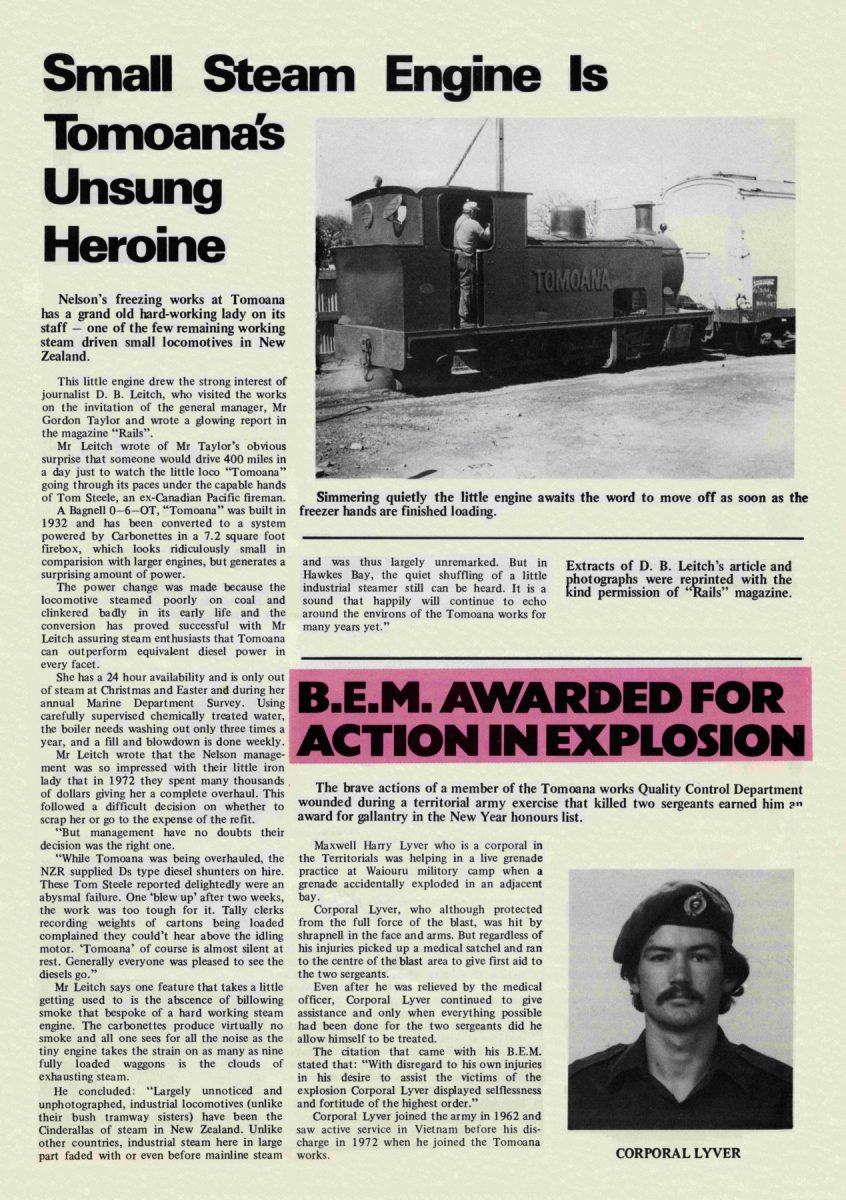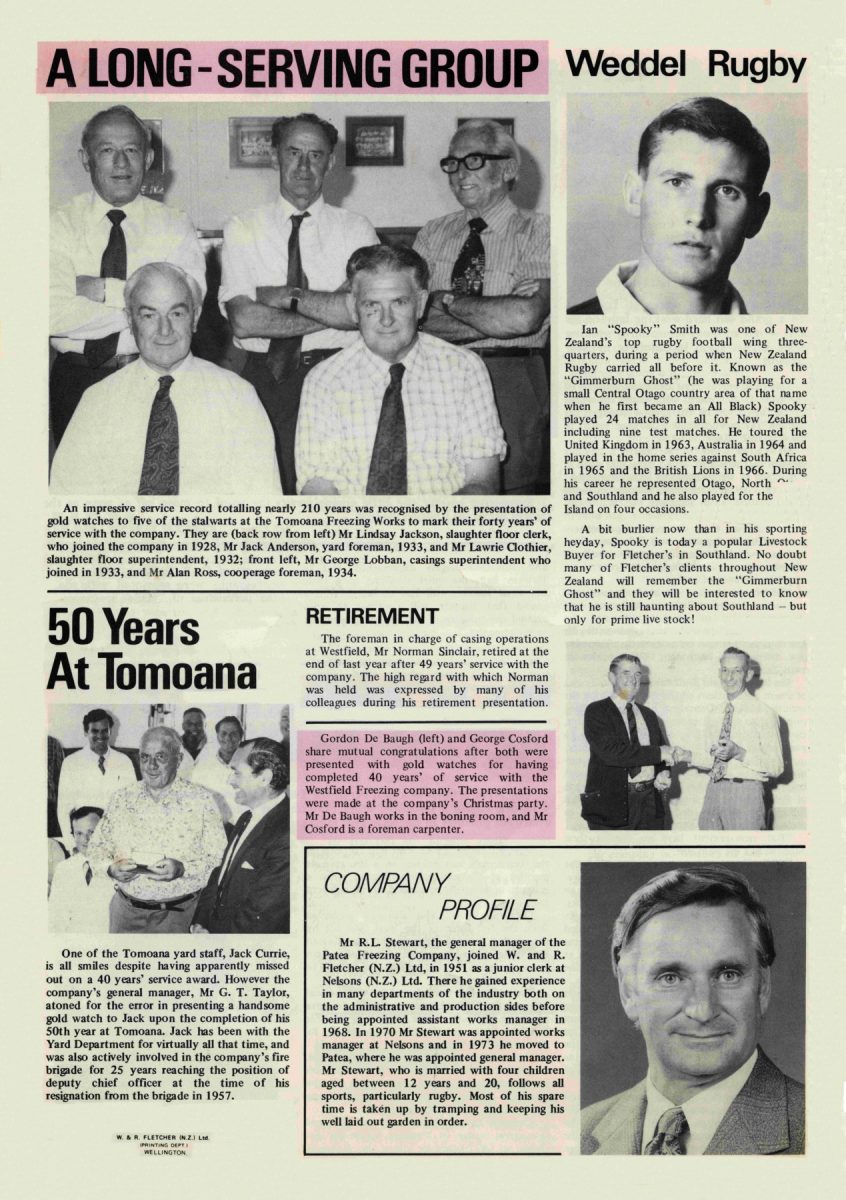VESTEY VISIT (CONTD.)
At a time when New Zealand needs more and more export sales, it also needs to put more faith in the ability of the international companies. It was stated in the Press by the New Zealand Meat Producers Board that they shared his views on overseas companies.
British Shops
Another important aspect of the Union International’s role in the sale of New Zealand meat was its Dewhurst chain of 1500 butchers shops in Britain – the largest independent chain in the country. These shops annually market millions of dollars of New Zealand meat.
Lord Vestey warned that with an improvement in the price situation, New Zealand must be careful not to price itself out of the market. This situation had occurred three years ago when it sold beef at high prices to Japan and the United States, and those countries which couldn’t afford the prices were cut out of the market.
The smaller markets were an important part of New Zealand’s export trade as they provided a constant valuable outlet for the country’s meat and it was interesting to note that these avenues were again being opened.
M.E. Markets
An important newcomer was the Middle East, which was part of the indication that the depressed demand and prices for meat were starting to swing upward.
The vast and wealthy markets of Iran and Iraq had good potential, and valuable sales might also be arranged with other oil-rich Arab states. Lord Vestey pointed out that not only will the Middle East countries buy more and more, other markets which have closed in the past two years would also be easing their restrictions.
With the return to market “normality”, which must happen according to Lord Vestey, New Zealand will have to make certain of securing footholds in as many markets as possible – not just the big ones.
Still on marketing, Lord Vestey said he would like to see the opportunity of selling New Zealand lamb in the United States open out to commercial competition.
While not criticising the work of Devco (the government’s sole selling agency in the U.S.), Lord Vestey felt his company could help expand sales to what is the biggest market in the Western world.
“The American form of supermarket buying is such a competitive one with low profit items giving way to the higher profit sellers.” “I think that we could present lamb as good trading value to the supermarket operators and so get a valuable entry into this large market.”
“And of course our size, experience in the meat business, and established selling units could be combined to ably present lamb to the American people, who up to now by tradition have been basically beef eaters.”
Farmers Attitudes
Whilst on this trip to New Zealand, Lord Vestey also played polo with his team, Stowell Park, England’s champion polo team. He said his appearances with the team had allowed him greater personal contact with many farmers at grass roots level than at any time since he lived in New Zealand in 1964 for one year.
Lord Vestey reminiscing over old times with a former workmate, Hori Wairama, on the beef floor of the Tomoana Works. During his tour of New Zealand Lord Vestey met several of the men he worked with while he got down to the “grass roots” side of the meat export trade during his stay here eleven years ago.
“These casual meetings allowed me a great insight into the farmers’ current attitudes.”
“The farmers hardline thinking was reflected in their questions about the present prices. of meat. With soaring costs, they are going through a very bad time just now and they need prices to rise.”
“And that’s our role as a company, to help the farmers get the best prices available, because let’s face it, if we can help them to do well, New Zealand through foreign exchange earnings will also be doing well, and it obviously means that we as a company will benefit.”
Before leaving New Zealand Lord Vestey had a final meeting with the Minister of Agriculture, Mr Moyle.
He said that his company would substantially upgrade its four freezing works in New Zealand.
Lord Vestey described his visit as a courtesy call at which he told Mr Moyle that he would like to expand his company’s New Zealand holdings, but that this was impossible under present Government regulations. Meat marketing and ways and means of cutting costs in the meat industry were among other topics of discussion at the half hour meeting.
Retirement
A popular member of the Head office Wool Department (Shipping), Mr Jack West has retired. Jack joined W. & R. Fletcher’s in 1963 and has now gone to the sands of Foxton where he will keep himself busy doing odd jobs and collecting pipis, but only in Regulation bags of course.
Lamb Is Airfreighted To Italy
W. and R. Fletcher (NZ) Ltd. recently secured a unique order to airfreight chilled lamb to Italy to cater for the country’s pre-Easter demand.
The original order, for one tonne or about 1,000 carcases from the Westfield works, was sent on approval to the Italian buyers in a container on board a British Airways flight from Auckland.
Because of the complexities of the flight routes the container was flown direct to London where it was transferred to another flight to re-route it back to Milan.
The lamb arrived in perfect condition and as a result the Italian firm placed a follow-up order for a further three tonnes of chilled lamb.
The deal, which was arranged by Weddels in London is believed to be one of the first for air freighted chilled lamb from New Zealand to Italy. It gave the Westfield works the opportunity of competing on a direct level against the local European product.
Under an anomaly of the Italian meat selling regulations frozen meat can not be sold in the same shop as fresh or chilled meat, therefore the New Zealand product was in display in the prime market area.
Fletcher’s views the Italian deal as a possible inroad into the tight European Community market, even though the overall value of the sale was relatively small.
The company hopes that it could provide trade opening for sea freighted meat to Italy a the high cost involved in air-freighting lamb would rule out this form of delivery on regular basis.
VISIT BY HAWAII AGENT
W. and R. Fletcher’s (N.Z.) Ltd. Head Office staff had the pleasure recently of entertaining two “old” friends from Hawaii Art and Jennie Hansen.
Art is President of A. H. Hansen Sales Ltd. who have been the Weddel agents in Hawaii for the past 25 years.
His company has built up its meat trade to such an extent that it now handles the major share of New Zealand meat imports in the islands.
The company’s new warehouse which which opened last July, is the most up-to-date complex in Honolulu and reflects Hansen Ltd’s optimism of the potential of New Zealand meat imports.
Another overseas visitor who paid a brief call to New Zealand in January was John Wood the manager of the Weddel (International) Ltd’s office in Osaka.
Although John was officially on home leave to Australia at the time he managed to fit in few days at the Westfield and Tomoana plant and then flew to Wellington for talks with Head Office staff.
John has been in Osaka for three years. Apart from the considerable business negotiated in this area, Weddel (International) Ltd, also sees the importance of having an office in close proximity to Korea, where increased quantities of New Zealand mutton are boned out for the Japanese trade.















Do you know something about this record?
Please note we cannot verify the accuracy of any information posted by the community.